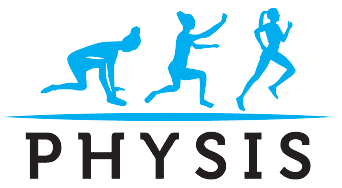In today’s fast-paced world, maintaining optimal wellness has become critical and challenging. Our lives are becoming increasingly sedentary with the advent of convenient technologies. In addition, the daily challenges and hectic schedules result in significant stress on our bodies. In times like these, physical therapy is a beacon of hope – as a non-invasive, holistic approach to achieving optimal wellness.
Physical therapy is a branch of healthcare that focuses on hands-on, non-invasive treatments to alleviate pain and recover from injuries or health conditions. Physical therapists provide holistic whole-body assessment, and evaluation of movement patterns to identify limitations and restrictions in the musculoskeletal system. They implement an individualized treatment plan to enhance mobility, reduce pain, restore strength, and improve overall quality of life in line with your own needs and goals.
There are several areas that physical therapy addresses which can lead to optimal wellness
- Pain Management: Pain can be debilitating physically and emotionally. It impacts your ability to live your life on your terms. Physical therapy is a non-invasive drug free pain management solution. Physical therapists use a variety of hands on treatment techniques and exercises to alleviate pain from injuries and health conditions.
- Restore mobility: Reduced mobility can surprisingly be a source of pain and lead to compensatory changes in various areas of the body. It goes without saying that reduced mobility can have a significant impact on day-to-day participation. Physical therapists implement a variety of treatments to restore active and passive motion at the joints to improve activity participation and the quality of life.
Useful Reading: – THE SECRET TO FASTER HEALING: DISCOVER THE MAGIC OF PHYSICAL THERAPY
- Recovering from an Injury: Physical therapy plays a critical role after an injury. An injury can result in reduced mobility, reduced weight bearing capacity, decrease in strength for inability to use the injured area and pain. Physical therapists can design and implement a tailored plan in line with your goals to facilitate healing and condition to prevent future injuries.
- Posture Correction: Our current sedentary lives revolve around smart devices and inadvertently lead to posture malalignment. This gives rise to aches, pain and spinal conditions. Physical therapy plays a critical role in restoring muscle balance and correcting posture through exercises to restore spinal alignment, reduce pain, regain strength, and promote movement. Further, through education and ergonomic recommendations physical therapists promote self management to prevent recurrence of such conditions.
- Improving sports performance: Physical therapists are movement experts and are able to identify muscle function, critical movement characteristics and the relationship between muscle mechanics and movement. They can identify key points of loss of muscle activity and load bearing tolerance. With targeted interventions they can provide treatments to enhance existing movement and function, in turn, improving performance.
- Chronic Disease Management: Physical therapy is an invaluable tool to learn self management techniques and education on chronic diseases and disabilities. Physical therapists educate patients on lifestyle modifications, exercises and techniques to manage daily life activities to prevent worsening of the condition.
Your Physical Therapy journey starts with an in-depth assessment and evaluation from a physical therapist. Your therapist will ask questions about your medical history, the history of the injury, and your goals and expectations from rehabilitation. It includes a physical examination to determine limitations and craft appropriate care plans. Your physical therapist will set clear goals and outline the rehabilitation plan. The treatment will include the achievement of numerous smaller goals all directed to achieving your big goal/expectation from rehabilitation.
The treatments include manual treatments and exercises in conjunction with ergonomic correction, breathing exercises, education on learning your own body mechanics, and activating chains of muscles and movement patterns through varied goal-directed activities.
The emphasis will be on functional rehabilitation, i.e. achievement on functional tasks like reaching, walking, lifting, etc.…rather than single-minded focus on the level of pain or range of motion only. While these numerical factors like pain scale and range of motion are important, the ultimate goal is to help you get to the activity you want to be able to perform with the right mechanics without any limitations. Your therapist will track your progress throughout the plan with mini-assessments and continuous verbal dialogue.
You are expected to be an active participant in the treatment with follow-through on education, home exercises and daily life changes advised by the therapist. An active participation, consistency, and open communication plays a vital role in the success of physical therapy. A lack of either of these three criteria often result in failed rehabilitation.
Physical therapy is a journey toward optimal wellness. It plays a critical role in reducing pain, restoring motion, restoring strength, recovering from injuries, managing chronic diseases or permanent disabilities, recovering from temporary disability, and improving sports performance. With open communication, active participation, and consistency you can reclaim your body and overall well-being resulting in optimal wellness.



Comments are closed